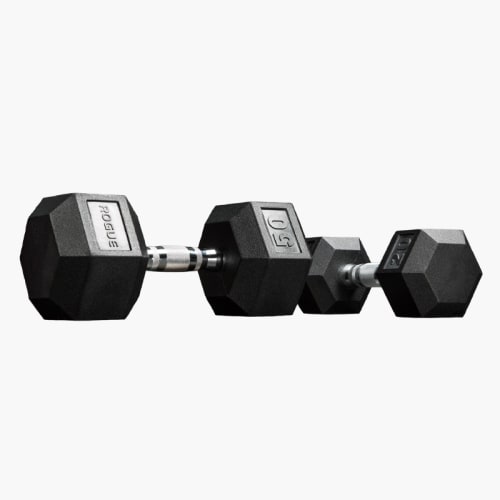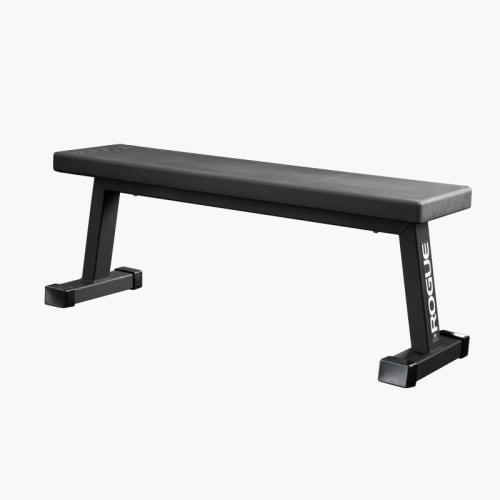The Guide To Bulgarian Split Squat Progression
The Bulgarian split squat is one of the most challenging variations available in the weight room. In this article I will explain how to move from a beginner to being able to perform advanced Bulgarian split squat variations.
Get weekly roundups of the best training tools in your inbox, every Monday.
No spam – just thoughtful training advice
- Progressive Overload Through Exercise Selection
- Equipment Required For DB Bulgarian Split Squat
- Beginner Lunge Variations
- Wall Supported Squat in Lunge
- Squat in Lunge
- Intermediate Lunge Variations
- Weighted Reverse Lunge
- Barbell Walking Lunge
- Bodyweight Bulgarian Split Squat
- Advanced Lunge Variations
- DB Bulgarian Split Squat
- DB Quad Dominant Reverse Lunge
- Elite Lunge Variations
- 1.5 Bulgarian Split Squat
- Barbell Bulgarian Split Squat
Progressive Overload Through Exercise Selection
Progressive overload involves adding stimulus to a movement pattern over time. In this case the movement pattern is the uni-lateral squat. This increase in stimulus is traditionally done through adding volume (sets and repetition) and intensity (load). However where most people forget to use it, and where it is extremely effective is in exercise selection. Exercises differ in how challenging they are. Therefore we can progress the stimulus on a movement pattern through selected more and more challenging exercises. Progressing towards a Bulgarian split squat requires patience and persistence, below I walk you through exercises you can use on your way towards a Bulgarian split squat and later variations you can use to continue to overload the position.
Equipment Required For DB Bulgarian Split Squat
Beginner Lunge Variations
Wall Supported Squat in Lunge
The lunge is often a very challenging position for beginners to get to grips with, not only is it uncomfortable and physically challenging but it also requires balance and stability. The wall supported squat in lunge is my go to position for a beginner who is just learning how to lunge. It requires a great deal less stability and balance due to using the wall for support, making it much easier for beginners to approach.
Squat in Lunge
The next variation I use once an individual is very confident on the wall supported squat in lunge is the squat in lunge. This requires more stability than the wall supported squat in lunge, but in general requires less than all other lunge variations. This stability allows us to build both strength in the muscles but also positional strength in the lunge.
Buy Dumbbells ↗
Intermediate Lunge Variations
Weighted Reverse Lunge
The reverse lunge is slightly more challenging than the squat in lunge as it requires more balance and stability. This is because the foot positioning needs to be found every repetition, not once like in the squat in lunge. This is why I would not use this exercise until a client is very comfortable finding the lunge position.
Buy Barbells ↗
Barbell Walking Lunge
The barbell walking lunge requires both strength and skill to perform with technical precision. This is why I would only use it with a client once they are well drilled in the lunge but also are capable of using the lunge to get stronger and too gain muscle mass.
Buy Barbells ↗
Bodyweight Bulgarian Split Squat
The bodyweight Bulgarian split squat is a perfect introduction to this challenging position. It can help an individual gain positional strength while also learning the correct and comfortable foot placement before introducing weights. Unfortunately we do not have this in our movement library at the moment so cannot provide the video, see below for the version with DB’s, it is exactly the same just without the weights.
Advanced Lunge Variations
DB Bulgarian Split Squat
Once all the exercises above have been mastered, this could take 1 month to 2 years+ depending on the individual, then we can start thinking about loading the Bulgarian split squat. The DB Bulgarian split squat is a perfect starting point. Start with very light weights and build them over time.
Buy Dumbbells ↗
DB Quad Dominant Reverse Lunge
This is another very challenging lunge variation that can be used as a replacement for the Bulgarian split squat. Personally I do not like performing the same single leg squat variation ad noisome and like to switch the variation out every cycle or so. This is a great example of a different lunge variation you could use if you want to keep progressing in the lunge but want to take a break from the Bulgarian split squat.
Buy Dumbbells ↗
Elite Lunge Variations
1.5 Bulgarian Split Squat
This is an example of an extremely challenging lunge variation that should only be performed by those who are extremely competent in the Bulgarian split already. This requires high levels of strength, stability, and grit to perform and use to generate high levels of fatigue. Do not attempt this until you consider yourself very experienced in the Bulgarian split squat.
Buy Dumbbells ↗
Barbell Bulgarian Split Squat
The barbell Bulgarian split squat is slightly more challenging than the DB or KB Bulgarian split squat in the sense that it is challenging to find the correct position with the barbell on the back and if the weight is to heavy the barbell cannot be dropped. In terms of loading it can be loaded very heavy, but this is also true of the DB and KB so this factor doesn’t matter to much. It is a slightly dangerous exercise due to the fact that it puts you in a compromised position. This is why it should only be performed by those who are extremely well versed in the Bulgarian split squat and know how to execute it with their eyes closes.
Buy Barbells ↗
If you enjoyed this resource you can find more below or try Programme, a fitness app that plans every workout for you – based on your progress, equipment and lifestyle.
This resource was written by Sean Klein. Sean Richard Klein has thousands of hours of coaching experience and a BSc in Sports Science with Management from Loughborough University. He owns a gym in Bayonne France, CrossFit Essor, which runs group classes and a Personal training studio.
Sean Klein



